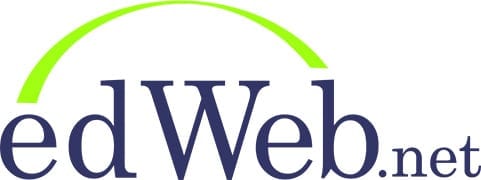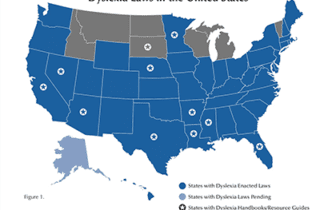This edWebinar will highlight the “go-to” resources and technology tools that are making quick strides in improving outcomes for students with dyslexia.
Assistive technology teachers working at schools in the Fairfax County, VA school district, one of the largest in the United States, are finding that the use of audiobooks is improving access to grade-level content while also developing the love of reading that motivates many students to continue improving.
The goal of the is edWebinar is to suggest what to do next in order to integrate an action plan to build and grow a dyslexia program
Learn how dyslexia impacts the reading process, and how educators can recognize the early warning signs of dyslexia at different grade levels.
When we “flip” the learning, and have students present to educators in our edWebinars, it’s a great example of how much we can learn from our students. In a recent edWebinar, Turn Struggling Readers Into Leaders Using Assistive Technology, Gavin and Marley, two middle school students, along with dyslexia specialist Dana Blackaby, presented on their use of assistive technology that helps struggling readers. We wanted to know how they felt about playing the role of teacher to a crowd of over 800 attendees.
“What are you [teachers] doing right now so that your students have unhindered access to grade-level curriculum each day?” is a question often asked by Dana Blackaby, Dyslexia Specialist at The Academy at Nola Dunn in Texas. During a recent edWeb.net edWebinar, Blackaby and two student-led tech crew members from The Academy at Nola Dunn, 5th-grade student, Gavin, and 4th-grade student, Marley, explained that students with disabilities cannot access grade-level curricula 100% by themselves if they are not yet reading at grade level. Eighty-five percent of what we learn we learn is by listening and students can listen and comprehend two grade levels above their reading levels.
There are four lies/misconceptions about struggling readers that have become embedded in school systems, said Terrie Noland, Vice President of Educator Initiatives at Learning Ally during a recent edWebinar, “School leaders are just following along and are starting to believe them.” These misconceptions are having a detrimental impact on struggling readers, and school leaders need to set the tone and build a school culture where best practices and evidence-based research are shared to create a system of support for all readers.
Children cannot grow out of dyslexia. Rather, the dyslexia will only have more severe consequences over time with lack of intervention. It is critical to keep an eye out for all possible red flags at every grade level to understand when intervention is needed. In their recent edWebinar, Kelli Sandman-Hurley, Ed.D., and Tracy Block-Zaretsky, Co-founders of the Dyslexia Training Institute, reviewed, grade level by grade level, the potential warning signs of dyslexia.
In this edWebinar, Cindy Kanuch guides through the philosophical shift in thinking about instruction and assessment and provide recommendations.
In this edWebinar, Kelli Sandman-Hurley, Ed.D and Tracy Block-Zaretsky uncover the red flags to illustrate the many ways dyslexia can manifest in students.









